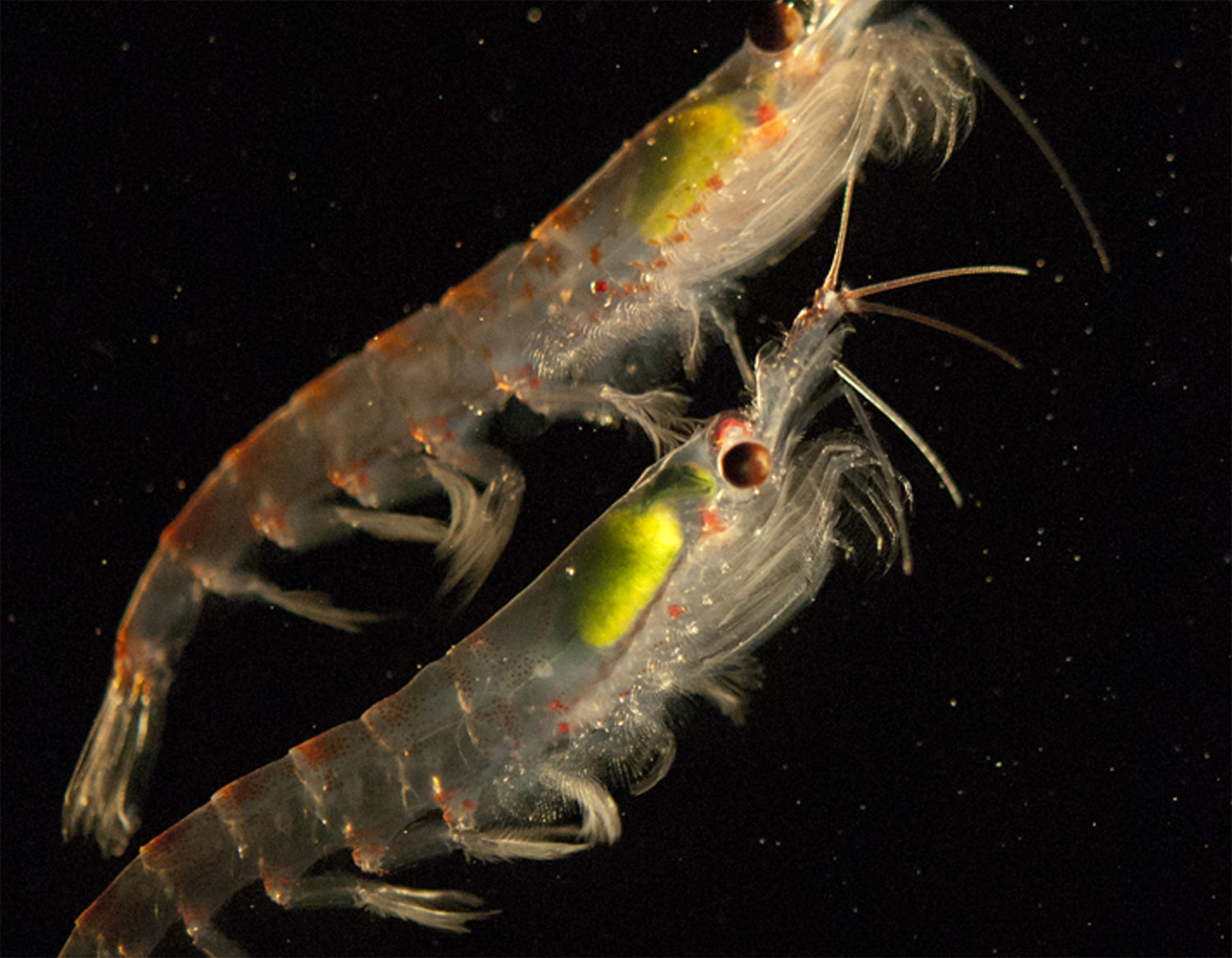Krill fishery
There is an estimated 379,000,000 tonnes of Antarctic krill in the Southern Ocean.. Over half of this krill is eaten each year by the wildlife of the region, such as whales, seals, penguins, squid, and fish. While krill is plentiful in the Southern Ocean, there are significant uncertainties about its population, and its relationship with the ecosystem as a whole. These include long-term trends regarding the amount of krill in the water, the spatial distribution of krill, how much krill is needed to sustain predator species, and the impact of climate change on krill populations. The abundance of Antarctic krill is intimately tied to seasonal sea ice conditions, climate, and ocean currents. Key breeding areas of krill are located in the Western Antarctic Peninsula, where the fishery operates. This area has experienced major warming over the last 50 years, and as a result, the extent and duration of winter sea ice are being reduced. This represents an important challenge in the management of the krill fishery.
The Antarctic krill fishery started in the early 1970s. It peaked in the late 1980s with catches up to 500,000 tonnes per year, by USSR and Japanese vessels. From the mid-1990s onwards, the krill catch dropped to under 100,000 MT per year. However, there has been a renewed interest in fishing for krill due to a growing market for nutritional supplements and fishmeal. In 2014, 290,000 tonnes of krill were harvested in the South Atlantic Sector. In 2014, approximately twelve vessels fished for Antarctic krill. Norway, Korea, China, and Chile are the biggest krill fishing nations.
Although the krill population is large, many predators hunt for krill in the very same areas (sectors) where krill fishing occurs. To ensure that the fishery does not harm these other species, CCAMLR has set limits on the krill fishery.
Aker BioMarine Antarctic, one of the founding partners of the Antarctic Wildlife Research Fund (AWR), is a Norwegian company operating two fishing vessels and is the biggest operator targeting krill by volume. Aker BioMarine’s krill products are used in human health and animal nutrition products. The krill fishery involves significant investments in specialized vessels, research, and development. AkerBioMarine’s long-term interests depend on strong precautionary management and up-to-date knowledge of the krill population.
The partners that make up AWR believe that in creating the fund, we will contribute to filling the gaps in knowledge about krill that is needed for responsible management of the fishery. The projects funded by the AWR will help resolve scientific uncertainties about krill and the broader ecosystem, providing better information for making fishery management decisions.













